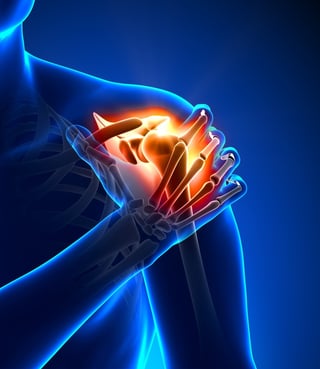3 Types of Arthroscopic Surgery: Knee, Shoulder, and Ankle Arthroscopy
April 7th, 2016 | 4 min. read
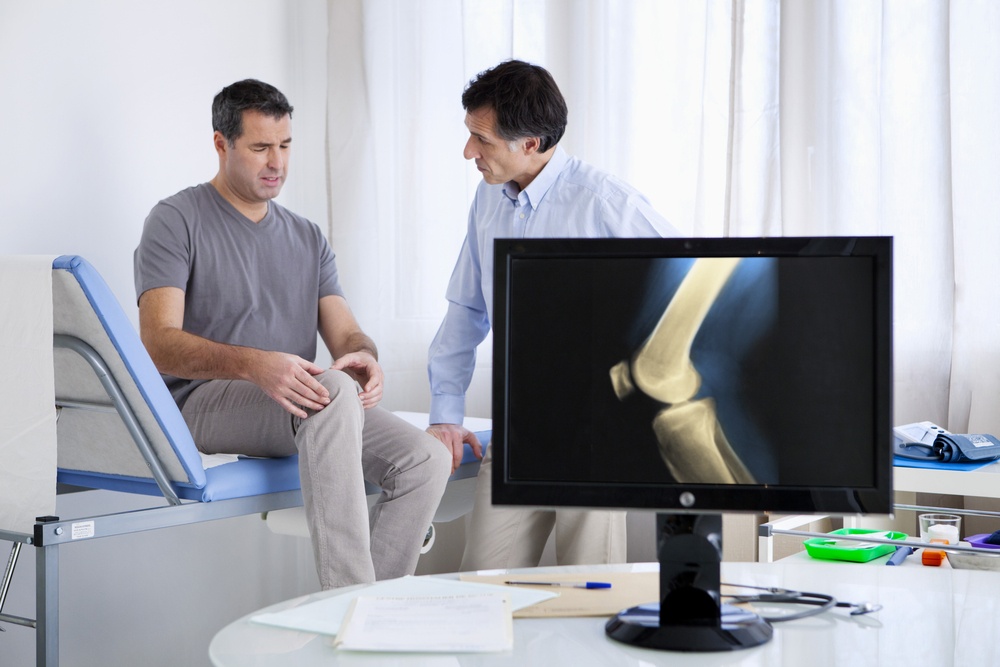
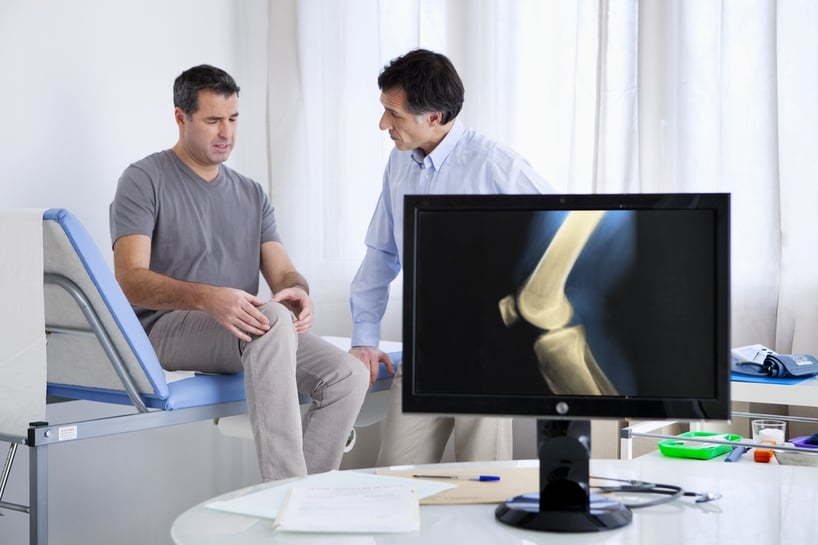
Arthroscopy is a minimally invasive procedure that uses a camera to look within a joint, rather than opening it completely. Orthopedic surgeons use arthroscopy to diagnose, treat, and repair numerous conditions and diseases that may cause joint pain or mobility problems. Are you suffering from knee, shoulder, or ankle pain or stiffness? Arthroscopic surgery may be an option for you.
Arthroscopic surgery first became known to the public through its use in treating sports injuries sustained by high-profile athletes — for example, meniscus tears in basketball players, severe cases of runner's knee in marathoners, or rotator cuff tears in football players or baseball pitchers.
Today, arthroscopy is used to treat non-athletes as well. An estimated 80% of orthopedic surgeons practice arthroscopy on their patients. Orthopedists find arthroscopy valuable because it is generally easier on the patient's body than open surgery and requires a shorter rehabilitation time.
Is arthroscopy an option for you?
If you are experiencing any of the following symptoms, arthroscopy may be helpful in diagnosing and treating your injury:
-
Knee pain
-
Shoulder pain
-
Ankle pain
-
Joint stiffness
-
Swelling
-
Restricted range of motion
-
Weakness or instability
-
Clicking or catching of the joint
-
Symptoms that do not respond to RICE treatment (Rest, Ice, Compression, and Elevation)
- Symptoms that do not respond to physical therapy
Below are brief descriptions of some of the most common knee, shoulder, and ankle problems that may benefit from arthroscopic surgery.
Knee arthroscopy
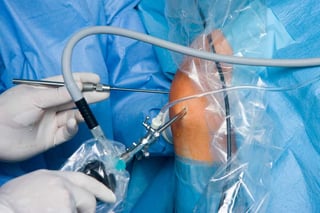
Arthroscopic knee surgery is one of the most common knee surgeries orthopedists perform. Frequently seen arthroscopic repairs to the knee include:
-
torn meniscus (the cartilage between the bones in the knee) repair
-
fractures
- disclocated patella (knee cap)
Using arthroscopy, your surgeon will repair these issues with surgical techniques like suturing, inserting pins or rivets, or repositioning bones.
Removal of tissue may also be necessary. Arthroscopy can be used to extract tissue or bone that may be impinging on your movement or causing pain — for example:
-
loose bodies of cartilage
-
Baker’s cyst (sometimes associated with arthritis)
- swollen or inflamed synovium (the lining in the joint)
Most knee arthroscopy procedures take about one hour to complete, usually in an outpatient surgical center.
The steps involved in knee arthroscopy:
-
You will be given anesthesia (in most cases, local).
-
A surgeon will make a few small incisions in your knee.
-
Saline (salt water) will be pumped in to expand the joint. This creates space to help the surgeon see and maneuver inside the joint.
-
The surgeon will insert the arthroscope (a thin instrument with an attached camera) through one of the cuts. Images from inside your knee will be projected on a monitor, where they can be magnified.
-
After your problem is located, the surgeon may insert additional, small surgical tools to correct the issue.
- After the surgery, the surgeon will drain the saline from your knee joint and close your incisions with stitches.
Post-surgery, you will be discharged with instructions for caring for your incisions. You may need to take pain medication, elevate your knee when resting, and apply ice to your joint to manage swelling. Walk with crutches during your recovery to protect your knee until it is fully rehabilitated. Your orthopedic surgeon will make recommendations for exercises or physical therapy.
Recovery time from knee surgery varies. Most patients can return to school or work within a week. After prescribed physical therapy, many can return to normal, active lifestyles within one or two months.
Need a consultation for Arthroscopic surgery?
Click the image below to request an appointment today
shoulder ARTHROSCOPY
The most common problems that can be treated with arthroscopic shoulder surgery include:
-
Impingement syndrome (restricted motion) from a bone spur called the acromion
-
Inflamed tissue above the shoulder joint
-
Damaged coracoacromial ligament or ligament tear
-
Torn labrum (cartilage lining the shoulder joint), which leads to shoulder instability
-
Bankart lesion (a labrum tear on the lower part of the shoulder joint)
-
SLAP lesion (a tear affecting the labrum and a ligament on the top of the shoulder joint)
-
Synovitis (inflammation in the lining of the joint)
- Arthritis of the clavicle (collarbone)
Depending on your injury or issue, your surgeon may bring the edges of a torn tendon together, then attach the tendon to the bone with sutures or metal or plastic rivets. Surgery may also require cleaning out or removing damaged or inflamed tissue or cutting a ligament.
Shoulder procedures take about one hour in an outpatient surgical center.
Recovery varies, but most patients go home the same day and take a few weeks to a few months to heal. You may need apply ice, take pain medication, and wear a sling while your rehabilitate your shoulder. Your orthopedic surgeon may recommend physical therapy to help strengthen the shoulder joint and restore range of motion.
ankle ARTHROSCOPY
Ankle arthroscopic surgery can be very effective in repairing and treating problems in the ankle. Frequently performed arthroscopic repairs to the ankle include:
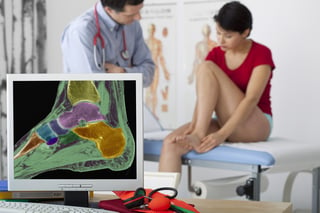
-
Ankle fusion for end-stage arthritis
-
Fracture repair and proper bone and cartilage alignment after a break (note: ankle fractures may require a combination of arthroscopic and open surgery)
-
Tightening of ligaments to treat ankle instability
- Treatment of osteochondral defects (OCDs) caused by fractures or sprains (note: surgery may involve scraping away damaged cartilage, bone grafting, or cartilage transplant)
Removal of tissue or bone may also be needed to reduce pain and restore range of motion to the ankle. For example, you may be suffering from:
-
Anterior ankle impingement (inflammation at the front of your joint that makes uphill walking difficult)
-
Arthrofibrosis (a buildup of scar tissue that can cause joint stiffness and pain)
-
Infection that doesn't respond to antibiotics alone
-
Loose bodies (floating bits of bone cartilage or scar tissue)
-
Osteophytes (bone spurs)
-
Posterior ankle impingement (inflammation at the back of your ankle, which may cause pain when pointing your foot)
- Synovitis (inflammation of the lining of your ankle joint)
Depending on your ankle injury or problem, your orthopedist may need to wash out your joint or shave away excess bone or remove tissue.
Ankle procedures take about one hour in an outpatient surgical center.
Most patients go the same day. Full recovery of the ankle joint may take a few weeks to a few months. If your injury cannot bear weight, you may need to use crutches while you heal. A brace or walking boot may be necessary. Physical therapy may also be recommended. Following your orthopedist's instructions will help you get back to your normal activity level sooner.
Should you consider aRthroscopy?
The answer depends on many factors, including your age, health history, lifestyle, and medications you may be taking. Give Coastal Orthopedics located in Corpus Christi a call to find out if arthroscopy may be the right choice for treating your knee, shoulder, or ankle pain.
Article written by: Rob Williams, MD
Dr. Williams has been practicing orthopedic surgery in Corpus Christi since 1998. After graduating from Texas Tech hereceived his medical degree from the University of Texas at San Antonio. At the prestigious Campbell Clinic located at the University of Tennessee, Dr. Williams completed not only an Orthopedic Surgery Residency, but an additional year of Fellowship Training in Spine Surgery. Dr. Williams is dedicated to creating an excellent patient experience in the office or in the surgery suite.


